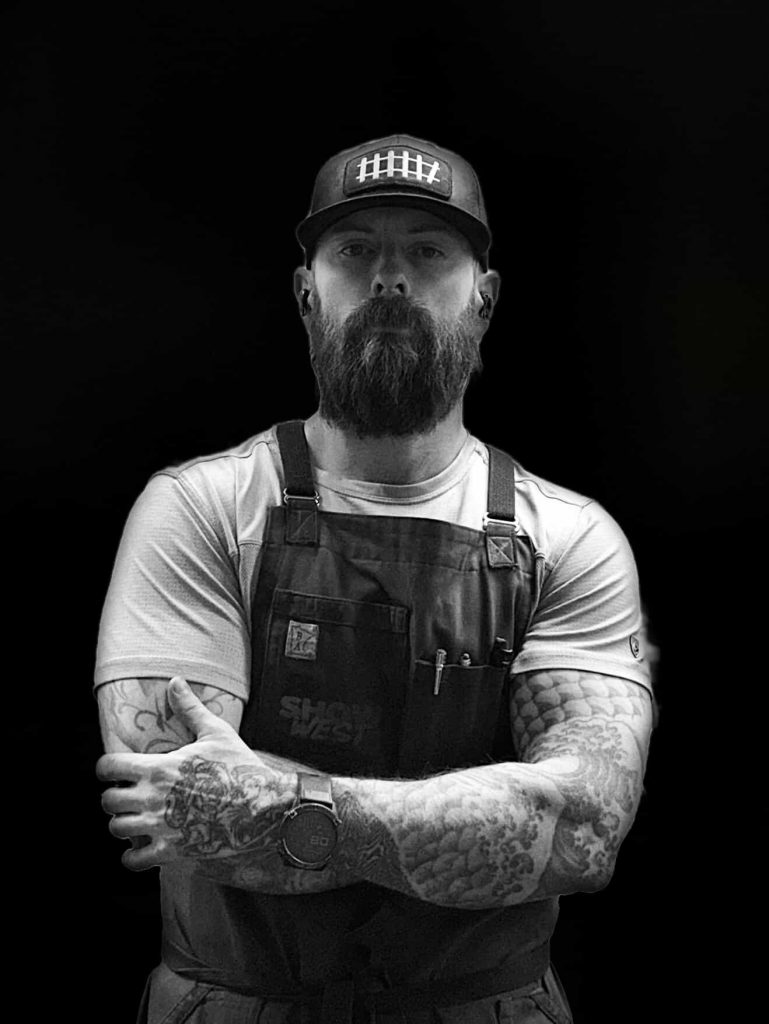
This week’s interview takes us into the mind of a chef turned knife maker. His inventive designs and photographical skills give his creations a unique place in the community. He is definitely not one to sit quietly. I am very excited to share his story with you.
To start off, please tell us a little about yourself.
Well, my name is Kolter Livengood, born and raised in Dallas, Texas. I was a Chef for 13 years in Chicago, co-founded a Concept called Brightwok Kitchen, but before that my experience was in luxury fine dining. I left the industry in 2020 for obvious reasons and moved back home to Dallas. I took a year off to do some running, and eventually landed myself as an electrician, and am currently studying (begrudgingly) for my journeyman’s exam. I started building my shop with next to zero knife making experience in February of 2024, and I made my first knife in that shop in April 2024.
What sparked your interest in knives?
I had a nickname in my mother and stepfather’s running club when I was 4 years old, “Chuck Lecter” for Chuck Norris and Hannibal Lecter, because I always had a swath of toy guns and knives in my running stroller. So, I’m not quite sure when the fascination started but it was quite young. When I first started culinary school, I got a job at Sur la Table and spent every cent I earned on Shuns and Globals. So, from the very beginning I was constantly in pursuit of better tools.
What inspired you to do this and how did you learn?
I was inspired by the makers whose work I owned, Mareko Maumasi, Don Nuguyen, Ian “Haburn” Rogers, James Oatley, Tony Laseur, Rick Petko, Mert Tansu, Salem Straub, Greg Cimms, Joe Schrum….Owning their work showed me how far modern-day craftsman were pushing the envelope of performance, design, and detail. Maintaining my collection, thinning, sharpening, etching, gave me a solid foundation on geometry, and finishing work. Everything else I scraped together from social media and YouTube and I just went for it.
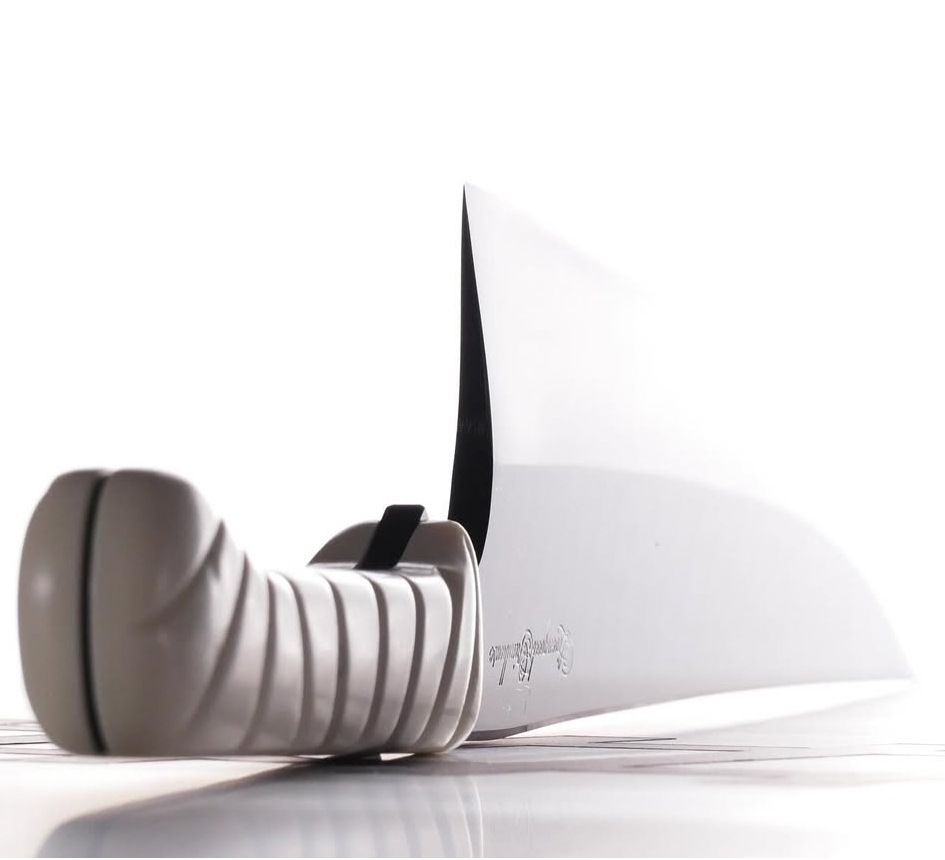
When did you start making knives?
April 2024
What did you make your first knife with?
I went all in, I bought an Ameribrade 2×72 and disk grinder, Evenheat kiln, drill press, band saw, the works. It is a huge financial risk, but at the end of the day tools can be sold and I knew I had what it takes to create something special.
Do you have a favorite knife you made, tell me about it?
Probably my latest project, inspired by a book series written by an old friend who commissioned it. It’s my first work in bakers forge damascus. It has some really lovely amboyna burl and carbon fiber, called dark matter gold, from Fatcarbon.
What is the most important aspect of a well-made knife?
It’s not enough just to have great performance and good balance. Aesthetically the knife has to inspire its user. Even when a knife I owned wasn’t the best performer, the time and dedication the maker put into it, and the beauty of its materials always made me excited to do knife work for hours.
What keeps you going?
A chance to be my own boss again, to live a life of constant elevation of attention to detail.
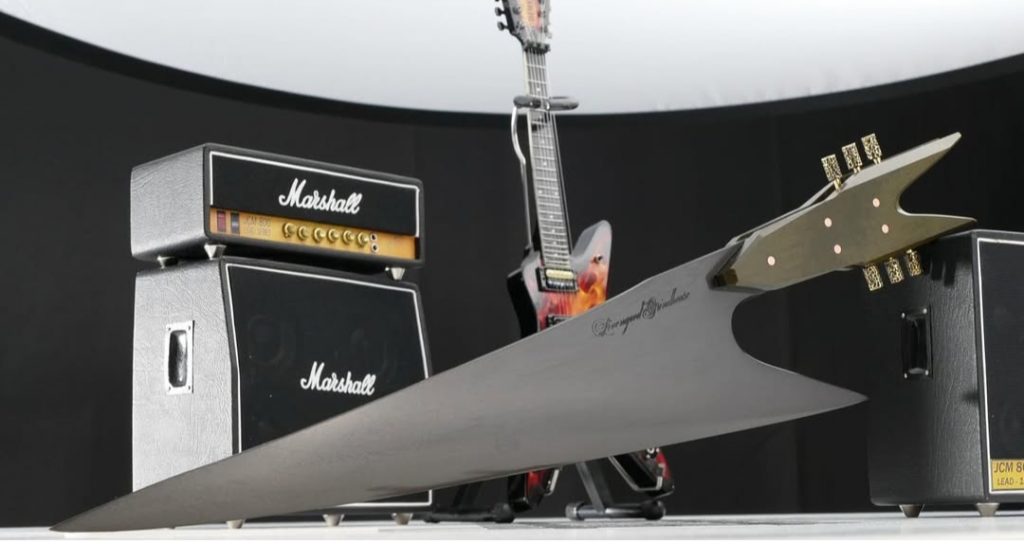
Biggest struggle?
I have worked 7 days a week for 18 months. Construction, knife making, along with pushing myself in the gym, constantly riding the edge of exhaustion emotionally and physically.
What kinds of knives do you make?
I make kitchen knives, some high performance, some conceptual.
How did your background affect your approach to knives?
Having used the best, in the most demanding environment the tool was made for, I know what to shoot for.
Who helped you early on?
Too many to count, everyone has been helpful
Who are your influences/inspirations?
My biggest knifemaker influence is Don Nguyen, which is tough because his work is so good and original. I’m also very inspired by sports cars, fantasy / sci-fi / anime.
How do you think that inspiration translates into your work?
Aggressive aerodynamic lines, high tech and rare materials, and not being afraid to push into the conceptual.
Any specific breakthroughs or revelations in your knife making journey?
Every project is a revelation at this point, I try to set my goals for every piece to be just outside my ability, so every aspect teaches me something new to add to the arsenal.
What is the perfect knife?
In kitchen knives I do not believe there is a perfect knife, because not all tasks require the same strengths. The thickest of Yanagibas slice fish beautifully but are trash when it comes to cutting a squash. So, the answer to what is the perfect knife is having six perfected knives.
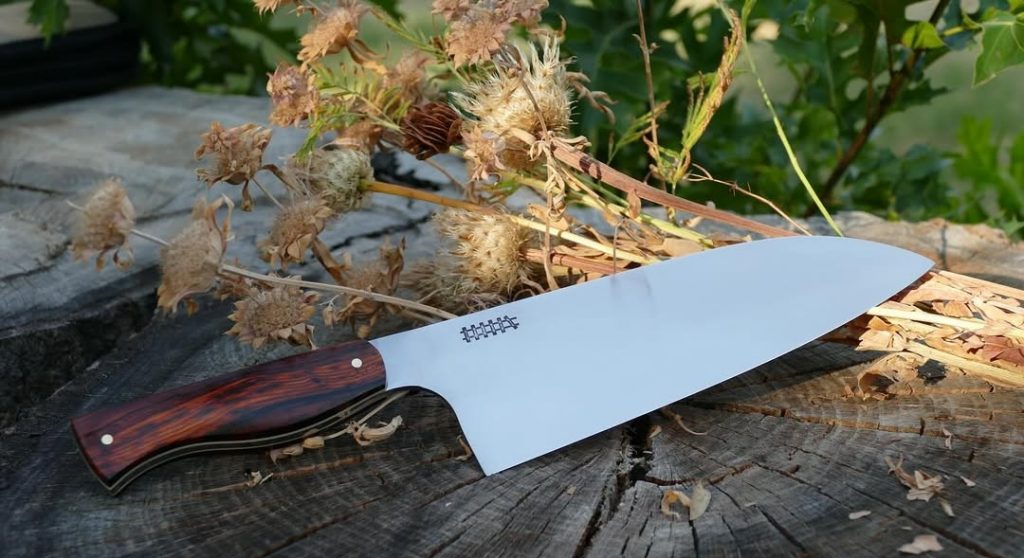
How do you approach a new concept and that concept’s implementation?
I start with research and visualization, If I have to reach out to a maker that did something similar, I will ask for tips. Knowing when to go slow and taking a step back from working on that particular part is super important. “Chasing my tail” is what I call messing up and trying to fix it over and over again in quick succession. If I make a mistake, I try to move onto something else, so that I can think of the best way to remedy the situation.
How do you approach knife testing?
Hard vegetables, hard cutting boards, and comparing it to the knives I still have is important.
How do you develop a design, select a steel, and fine-tune a heat treatment?
When I get inspiration, I try to draw it, but I’m not a good artist. I try to draw inspiration from the things I read and watch. Kitchen knives in my opinion should be made with simpler steel, so they are easier to maintain their geometry. Heat treat? I just follow the knife steel nerds, because honestly, I don’t know metal like he does.
What do you like about AEBL steel?
AEBL is just so good for the maker and the end user. Very underappreciated in the world of damascus and PM (powdered metallurgy) steel.
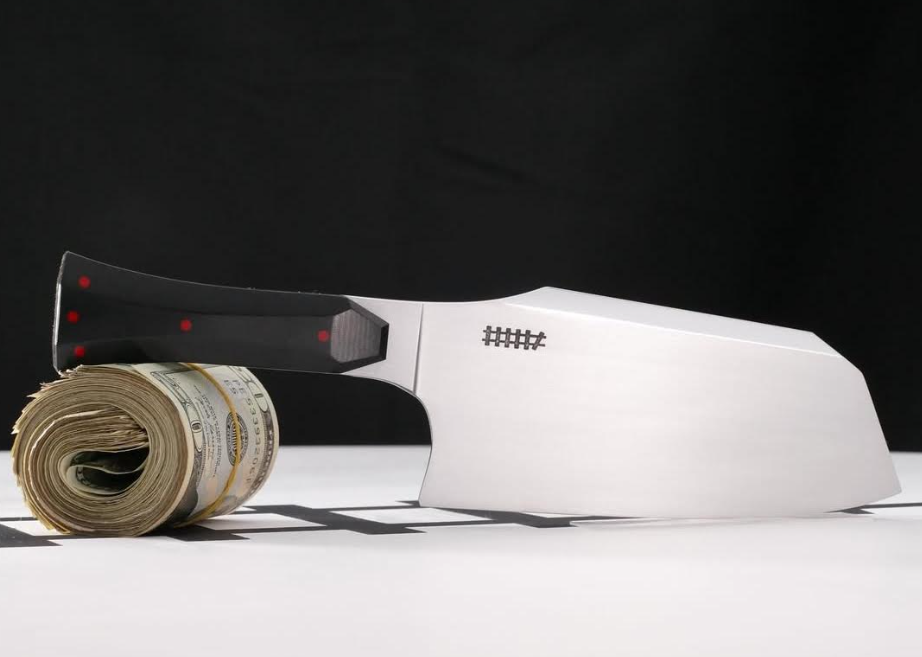
How has the knife world changed since you started?
The obvious answer is social media going algorithmic and censorship, but I think things are getting better, we just have to become better content creators, photographers, and marketers, which at the end of the day makes us better entrepreneurs. There are also many more talented makers putting out incredible work, but there are still huge untapped markets. You just have to go out and create those connections.
What’s up next for you? Any exciting new projects to tell us about?
I have some big things planned, but I can’t get into details yet!
To find out what Kolter has going on, and to see more of his work, check out his website http://www.livengoodgrindhouse.com and follow him on Instagram http://www.instagram.com/livengood_grindhouse
Leave a Reply